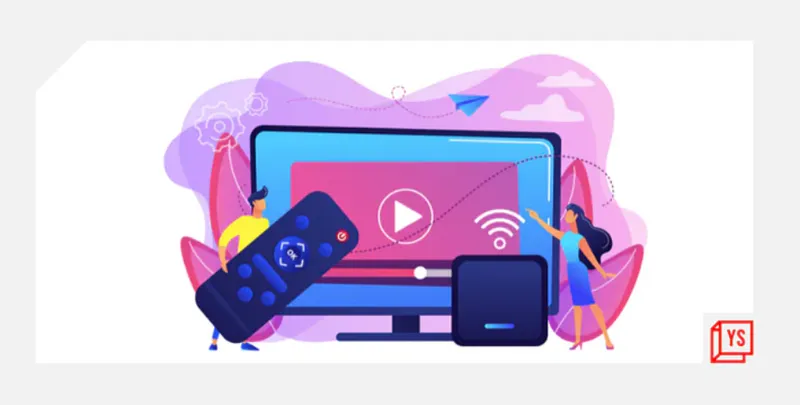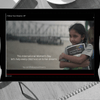Adtech startup VDO.AI creates monetisation avenues for connected TV and OTT apps
Adtech startup VDO.AI combines its proprietary algorithm with creativity, reach, and targeting across devices to help connected TV and OTT apps like Disney Hotstar and Prime Video win the war for consumer attention and ensure monetisation solutions.
Serial tech entrepreneur Amitt Sharma found it very challenging to create an effective monetisation strategy for his publishing startup. This problem statement led him to build a solution and bootstrap digital video technology startup in 2017.
“VDO.AI was born out of a problem of failed monetisation strategies for our publishing platform NewsD, a new generation magazine for millennials on the go. That's why VDO.AI focuses on publishers and advertisers,” Amitt says.
Amitt has been an entrepreneur in the media and industry space for 15 years and has a deep understanding of this segment. His other startups include SuperSource, Zomobo, and StatMyWeb.
He realised that publishers and advertisers were not getting “full value” on their investments in terms of reaching out effectively to their customer base. This is due to multiple reasons such as lack of access to cost-effective technologies, complex tech platforms, and dominance by giants like Google and Meta.
Amitt strongly believes that video is the final frontier for the distribution of information and “one stands to lose a lot if there are no effective ways of reaching the desired user base”.

What it does
Headquartered in New Jersey, US, and New Delhi, India, the startup began with an aim to create an automated tech platform to help publishers and advertisers reach out to users in the most effective manner and with the desired return on investment.
It aims to achieve enhanced brand awareness via “direct reach, proprietary technology, and high-impact creative formats” that provide “high viewability and user engagement”.
“Our platform connects the right user at the right time. The objective was to give unrivalled monetisation solutions to connected TV (CTV) and over-the-top (OTT) platforms, combining innovation and targeted outreach to achieve desired results,” Amitt says.
VDO.AI’s tech platform creates a framework where users spend more time on the site to help publishers while advertisers reach out to the audience with the right kind of ads – resulting in higher revenue for both.
The founder of VDO.AI says all this is powered through its proprietary AI-driven algorithm where the right video is made for the right context. The entire process is automated.
“We help our clients build unique monetisation strategies across CTV and OTT apps by providing custom-built video streaming infrastructure backed by a robust AI mechanism. This offers clients complete control over the impression goals, delivery speed, and frequency capping across all platforms, helping them create an advanced reader journey with best-in-class automation to drive higher engagement and revenue,” Amitt says.
A diverse clientele
VDO.AI, which employs 150 people, serves about four billion direct impressions every month across 3,000 publishers. Clients span global companies and Indian publishers.
Global customers of VDO.AI are the likes of Disney Hotstar, AirBNB, and Amazon Prime. In India, it has partnerships with publishers like India TV, The Hindu, Dainik Bhaskar, Dainik Jagran etc. It is also engaged with other organisations like Lenovo and Gujarat Tourism.
According to Amitt, VDO.AI has registered a double-digit million-dollar yearly turnover and has grown 500% CAGR since its establishment. It expects to grow at a compound annual growth rate of more than 60% this year and claims to be profitable.
The business model is based on a revenue-sharing agreement - it makes money when its clients do.
Future plans
Amitt believes that advertising technology or adtech is still a relatively new industry that is gaining traction. There is much to be done in terms of meeting the expectations of consumers by analysing user data activity.
“We are continuously developing new solutions,” he says.
These include interactive user engagement tools such as interactive CTV, web ads, and solutions like 3D impact, shoppable units, etc. This will see VDO.AI expanding into new verticals such as ecommerce monetisation, mobile app monetisation etc.

“The consumption of video content is increasing by the day and this is a huge tailwind for us. We have evolved into a growth engine for both our publishers and advertisers,” Amitt says.
According to a report by IMARC Group, the global digital video content market reached a value of $151.4 billion in 2021 and is expected to reach $391.1 billion by 2027. Meanwhile, the global adtech software market was valued at $16.27 billion in 2018 and is projected to reach $29.85 billion by 2026, according to Verified Market Research.
The adtech market is quite crowded with the presence of numerous players, including large companies such as Google, Meta, and InMobi as well as numerous boutique organisations.
On the differentiator of VDO.AI, Amitt says, “Our solutions offer unparalleled monetisation management across CTV and OTT apps. We provide comprehensive answers to drive the right outcomes for brands by combining creativity, reach, and target across devices.”
On the future plans, VDO.AI is looking at growing beyond North America and India, and plans to make its presence in other regions. It also expects a lot more technology disruption in the smart TV space and placed its bets on this area.
Amitt believes that this decade “belongs to digital video and we are in the right spot”.
Edited by Teja Lele









